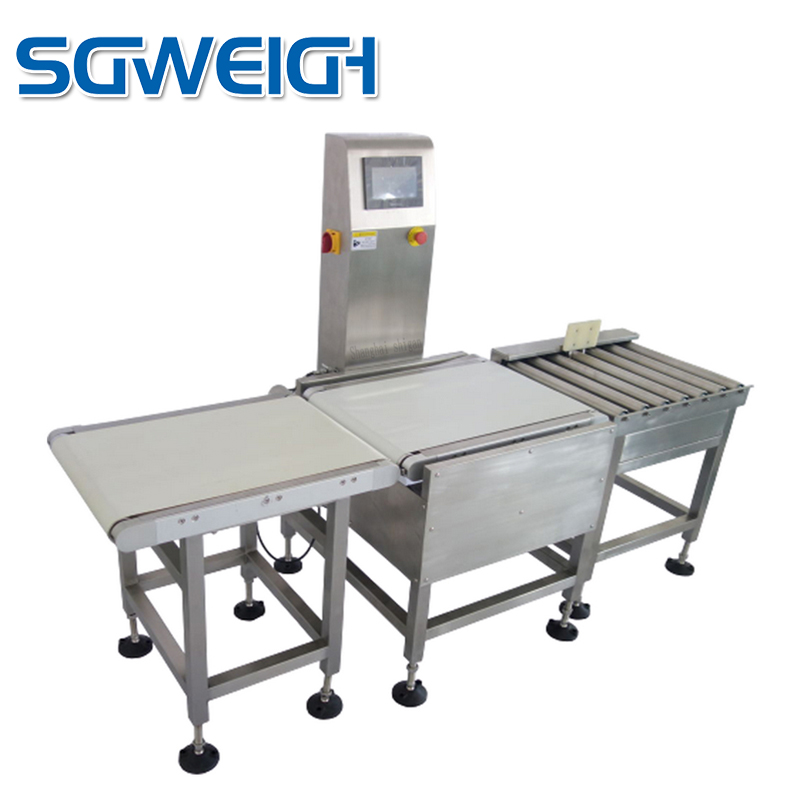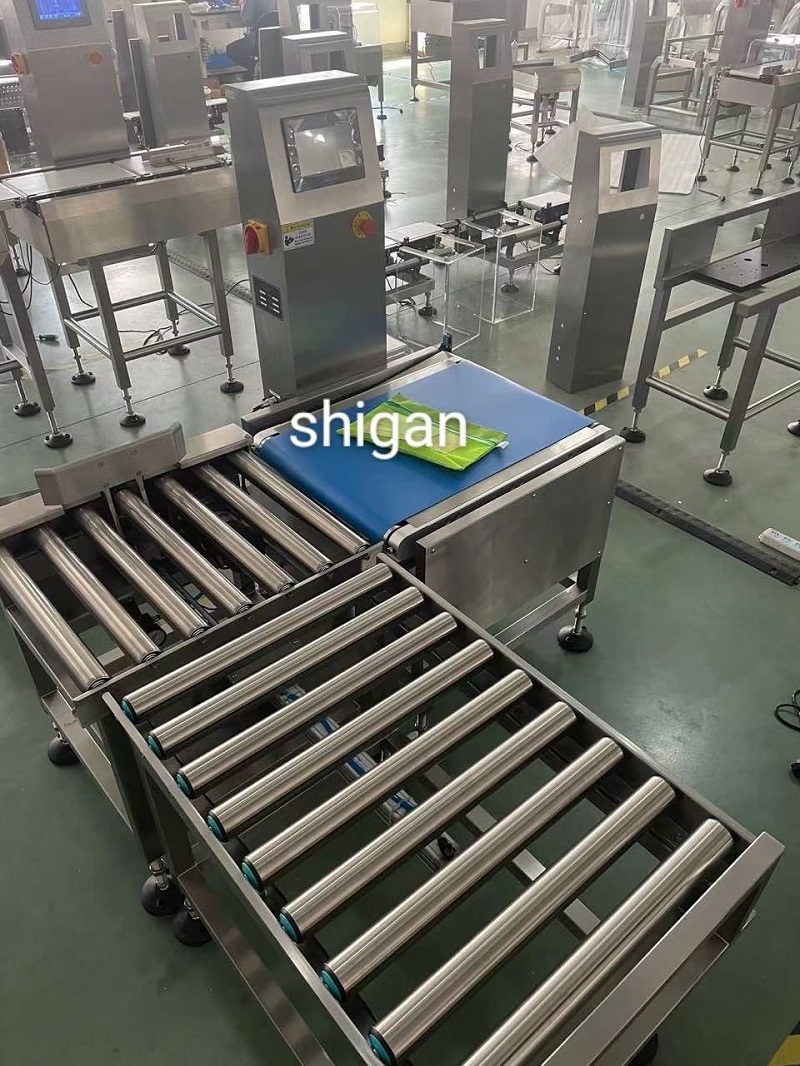
Power conveyor roller line checkweighers usually consist of a scale body, a load cell, a weight indicator, a conveyor device and other parts. Among them, the scale body is the supporting structure of the entire equipment. It is usually made of high-quality stainless steel and has the characteristics of high strength and corrosion resistance. The load cell is the core component for weight measurement. It can convert the weight of an object into an electrical signal and transmit it to the weight display. A weight indicator is a device used to display the weight of an object, usually using a digital display to facilitate users to view and record. The conveying device is responsible for conveying objects from one end to the other, using motor-driven rollers to achieve continuous conveying.
2. Working principle of Power Conveyor Roller Check Weigher

The working principle of the power conveying drum line checkweigher is mainly to measure the weight of the object through the weighing sensor and transmit the weight signal to the weight display for display. When an object passes through the weighing area, the load sensor senses the pressure change and generates a corresponding electrical signal. After a series of signal processing and conversion, the electrical signal is transmitted to the weight indicator for display. At the same time, the conveying device will continuously convey the objects to the next link, thereby realizing the functions of continuous measurement and sorting.